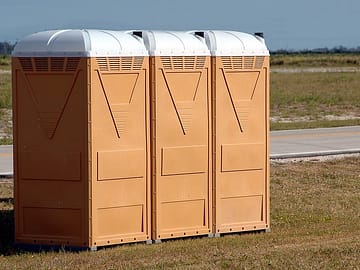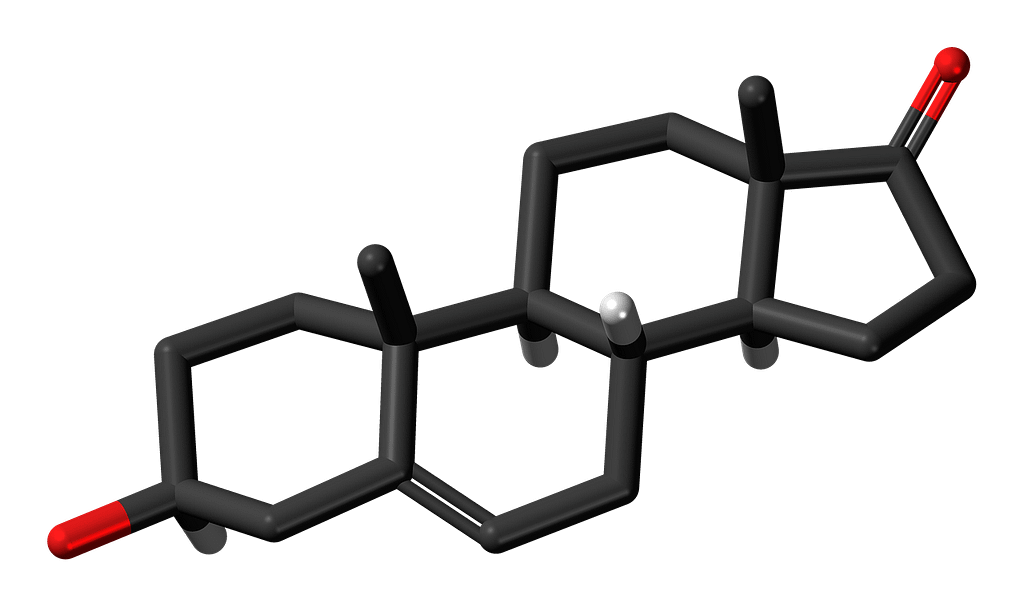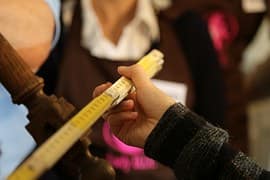Threads are like the silent heroes of the mechanical world, quietly holding things together with precision and reliability. But what happens when those threads don’t quite fit the bill? Welcome to the world of thread gaging, where engineers troubleshoot issues to ensure those connections remain strong. In this article, we’ll explore some common problems encountered in thread gaging and how to troubleshoot them with ease.
Issue 1: Inconsistent Measurements
Inconsistent measurements during thread gaging can be frustrating and lead to uncertainty about the integrity of threaded connections. Here’s how to troubleshoot:
- Calibrate Equipment: Regularly calibrate thread gages and measurement equipment to ensure accuracy and consistency. Any discrepancies in measurements should be promptly addressed to maintain reliable results.
- Standardize Procedures: Establish standardized procedures for thread gaging, including proper technique and measurement protocols. Consistency in procedures helps minimize variability and ensures reliable results across different operators.
Issue 2: Fitment Problems

One of the most common issues in thread gaging is fitment problems. This occurs when the threaded components don’t mate correctly, leading to loose or tight connections. Fitment problems can arise due to various factors, including:
- Incorrect Thread Pitch: Ensure that the thread pitch on both components matches precisely. A mismatch in thread pitch can result in improper engagement and compromised integrity.
- Debris or Damage: Check for any debris or damage in the threaded area that may prevent proper fitment. Clean the threads thoroughly and inspect for any signs of wear or deformation.
Issue 2: Oversized or Undersized Threads
Another common issue is encountering threads that are either oversized or undersized. This can occur due to machining errors, wear and tear, or improper tooling. Here’s how to troubleshoot:
- Use of Incorrect Gage: Ensure that you’re using the correct thread gage for the application. Go/no-go gages are particularly useful for quickly determining if threads are within acceptable tolerances.
- Inspect Machining Equipment: If encountering consistently oversized or undersized threads, inspect the machining equipment for any calibration issues or worn tooling. Addressing these issues can prevent future problems.
Issue 3: Thread Damage

Thread damage can occur due to mishandling, improper storage, or excessive wear. Common types of thread damage include nicks, burrs, and stripped threads. Here’s how to address it:
- Repair or Replace: Depending on the severity of the damage, consider repairing or replacing the threaded component. Minor damage may be remedied with careful deburring or re-threading, while severe damage may require replacement.
- Implement Proper Handling Procedures: Educate personnel on proper handling and storage procedures to minimize the risk of thread damage. Avoid dropping or mishandling threaded components, and store them in protective containers when not in use.
In the intricate world of thread gaging, encountering challenges is par for the course. However, with a solid understanding of common issues and effective troubleshooting strategies, engineers can overcome these obstacles with confidence. By addressing fitment problems, managing oversized or undersized threads, preventing thread damage, and ensuring consistent measurements, engineers can uphold the integrity and reliability of threaded connections in their projects.





 Professional Staging
Professional Staging Online Listings
Online Listings Auctions
Auctions
 Eating foods rich in vitamin C is a fantastic way to give your immune system a boost during the festive season. This insanely good antioxidant plays a crucial role in supporting the body’s natural defense mechanisms, helping to fight off infections, and keeping you healthy. So, load up on those citrus fruits like oranges, lemons, and grapefruits! Not only are they deliciously refreshing, but they’re also packed with vitamin C. But it’s not just about citrus fruits alone – there are other options to choose from, too. Bell peppers, strawberries, kiwis, and even broccoli contain high immunity-boosting nutrient.
Eating foods rich in vitamin C is a fantastic way to give your immune system a boost during the festive season. This insanely good antioxidant plays a crucial role in supporting the body’s natural defense mechanisms, helping to fight off infections, and keeping you healthy. So, load up on those citrus fruits like oranges, lemons, and grapefruits! Not only are they deliciously refreshing, but they’re also packed with vitamin C. But it’s not just about citrus fruits alone – there are other options to choose from, too. Bell peppers, strawberries, kiwis, and even broccoli contain high immunity-boosting nutrient. Instead of reaching for the box of store-bought cookies loaded with artificial ingredients and added sugars, why not try making your own healthier version at home? There are plenty of recipes available online that use natural, non-dangerous sweeteners such as maple syrup or honey, and incorporate wholesome ingredients like oats, nuts, and dried fruits. These homemade treats not only taste delicious but also provide valuable nutrients and fiber. Another great option for guilt-free Christmas treats is fresh fruit, like mentioned.
Instead of reaching for the box of store-bought cookies loaded with artificial ingredients and added sugars, why not try making your own healthier version at home? There are plenty of recipes available online that use natural, non-dangerous sweeteners such as maple syrup or honey, and incorporate wholesome ingredients like oats, nuts, and dried fruits. These homemade treats not only taste delicious but also provide valuable nutrients and fiber. Another great option for guilt-free Christmas treats is fresh fruit, like mentioned.

 Being stuck between floors in an elevator is a situation that can be
Being stuck between floors in an elevator is a situation that can be 
 Another major mental health benefit of THCP is its anti-depressant properties. Depression is a severe mental illness that affects millions of people worldwide. Like anxiety, traditional treatment for depression includes medication and therapy. However, THCP is a natural alternative with promising results in managing depression without any side effects. THCP works by increasing the production of serotonin, a neurotransmitter responsible for regulating mood, appetite, and sleep.
Another major mental health benefit of THCP is its anti-depressant properties. Depression is a severe mental illness that affects millions of people worldwide. Like anxiety, traditional treatment for depression includes medication and therapy. However, THCP is a natural alternative with promising results in managing depression without any side effects. THCP works by increasing the production of serotonin, a neurotransmitter responsible for regulating mood, appetite, and sleep. Sleep is crucial for maintaining good mental health. Lack of sleep can lead to several mental health conditions, including depression and anxiety. THCP can help improve sleep quality by regulating the endocannabinoid system, which plays a critical role in sleep regulation. THCP works by increasing the levels of GABA, a neurotransmitter responsible for promoting sleep. Studies have shown that THCP can improve sleep quality in patients with sleep disorders.
Sleep is crucial for maintaining good mental health. Lack of sleep can lead to several mental health conditions, including depression and anxiety. THCP can help improve sleep quality by regulating the endocannabinoid system, which plays a critical role in sleep regulation. THCP works by increasing the levels of GABA, a neurotransmitter responsible for promoting sleep. Studies have shown that THCP can improve sleep quality in patients with sleep disorders.
 The first advantage of renting portable toilets is that they are very convenient. You won’t have to worry about finding a place for your guests to use the restroom. They will be able to take care of their needs in a clean and comfortable environment. Many people who have used portable toilets say they prefer them to traditional restroom facilities. This is due to many reasons. But if you know someone who has used it, they will surely attest to its convenience.
The first advantage of renting portable toilets is that they are very convenient. You won’t have to worry about finding a place for your guests to use the restroom. They will be able to take care of their needs in a clean and comfortable environment. Many people who have used portable toilets say they prefer them to traditional restroom facilities. This is due to many reasons. But if you know someone who has used it, they will surely attest to its convenience.
 The last advantage of renting portable toilets is that they are more cost-effective. This is because you don’t have to worry about the maintenance and cleaning of the units. You can just rent them and use them for your event. You don’t have to worry about the costs of hiring someone to clean and maintain the units. This can save you a lot of money in the long run. Many people who have used portable toilets say they are very satisfied with the results. They were able to save a lot of money and still provide their guests with a clean and comfortable place to use the restroom.
The last advantage of renting portable toilets is that they are more cost-effective. This is because you don’t have to worry about the maintenance and cleaning of the units. You can just rent them and use them for your event. You don’t have to worry about the costs of hiring someone to clean and maintain the units. This can save you a lot of money in the long run. Many people who have used portable toilets say they are very satisfied with the results. They were able to save a lot of money and still provide their guests with a clean and comfortable place to use the restroom.


 The second reason crypto could crash is because of its high volatility. Cryptocurrencies are known for their wild price swings, and this could eventually lead to investors getting burned out.
The second reason crypto could crash is because of its high volatility. Cryptocurrencies are known for their wild price swings, and this could eventually lead to investors getting burned out. The fourth reason crypto could crash is that there are not enough real-world use cases for it. While some businesses accept cryptocurrency, it is still not widely used. This lack of adoption could lead to a loss of interest and eventually cause prices to drop. Many say that cryptocurrencies are not ready for mass adoption yet, and this could be a big problem in the future. Which is why they prefer to stay on the sidelines for now.
The fourth reason crypto could crash is that there are not enough real-world use cases for it. While some businesses accept cryptocurrency, it is still not widely used. This lack of adoption could lead to a loss of interest and eventually cause prices to drop. Many say that cryptocurrencies are not ready for mass adoption yet, and this could be a big problem in the future. Which is why they prefer to stay on the sidelines for now.
 One of the first places to check for a company’s social media presence is its website. If you can’t find any links to their social media accounts, that could signify that they are trying to hide something. Also, please take a look at the content of their social media posts. If they seem too good to be true, they probably are. Scammers often make false claims about their product or service to lure people in.
One of the first places to check for a company’s social media presence is its website. If you can’t find any links to their social media accounts, that could signify that they are trying to hide something. Also, please take a look at the content of their social media posts. If they seem too good to be true, they probably are. Scammers often make false claims about their product or service to lure people in. Finally, one of the easiest ways to spot a scam website is to look at the address bar and URL. If the URL is misspelled or has strange characters, that is usually a sign that it is not a legitimate website. You should also be careful of websites that use “htttp” instead of “htpps.” This means the website is not secure, and your personal information could be at risk.
Finally, one of the easiest ways to spot a scam website is to look at the address bar and URL. If the URL is misspelled or has strange characters, that is usually a sign that it is not a legitimate website. You should also be careful of websites that use “htttp” instead of “htpps.” This means the website is not secure, and your personal information could be at risk.
 Italian espresso is known for its intense flavor. If you’re looking for a coffee that packs a real punch, this is the one for you. The bold flavor of Italian espresso will wake you up and get you going in the morning.
Italian espresso is known for its intense flavor. If you’re looking for a coffee that packs a real punch, this is the one for you. The bold flavor of Italian espresso will wake you up and get you going in the morning. When you drink Italian espresso, you’re not just getting a delicious cup of coffee. You’re also getting an experience. Drinking Italian espresso is a great way to start your day or enjoy a mid-day pick-me-up. Whether you’re enjoying a cup by yourself or with friends, you’re sure to love the experience of drinking Italian espresso.
When you drink Italian espresso, you’re not just getting a delicious cup of coffee. You’re also getting an experience. Drinking Italian espresso is a great way to start your day or enjoy a mid-day pick-me-up. Whether you’re enjoying a cup by yourself or with friends, you’re sure to love the experience of drinking Italian espresso.
 One of the best ways to improve yourself is to use a life planner. A life planner will help you track your progress and ensure that you make the most of your time. There are many types of planners, but many prefer the full life planner. A full life planner will also help keep you organized and on top of your goals. Today, successful people use planners to help them stay on track.
One of the best ways to improve yourself is to use a life planner. A life planner will help you track your progress and ensure that you make the most of your time. There are many types of planners, but many prefer the full life planner. A full life planner will also help keep you organized and on top of your goals. Today, successful people use planners to help them stay on track. When you take risks, you open yourself up to new opportunities. These opportunities can lead to growth and self-improvement. Don’t be afraid to take risks in order to improve yourself. Taking risks can be difficult initially, but it will get easier with time. Just make sure that you are taking risks for the right reasons. Many people are not aware, but successful people often take risks. This has lead them to where they are in life right now, and it can do the same for you.
When you take risks, you open yourself up to new opportunities. These opportunities can lead to growth and self-improvement. Don’t be afraid to take risks in order to improve yourself. Taking risks can be difficult initially, but it will get easier with time. Just make sure that you are taking risks for the right reasons. Many people are not aware, but successful people often take risks. This has lead them to where they are in life right now, and it can do the same for you. If you have an injury case, it may be hard to get your claim because you do not have the legal knowledge to know how to handle your case. Hiring an experienced personal injury lawyer will help you with your case because they know how to negotiate and litigate your claim to prevent losing your money. After all, you did not follow the legal procedures.
If you have an injury case, it may be hard to get your claim because you do not have the legal knowledge to know how to handle your case. Hiring an experienced personal injury lawyer will help you with your case because they know how to negotiate and litigate your claim to prevent losing your money. After all, you did not follow the legal procedures. Most people lose a lot of money because they do not know the amount of compensation they can expect from a personal injury claim. It is necessary to contact a personal injury lawyer immediately after your accident to file your claim and to speed up the process of receiving a settlement that will help you pay for your hospital bill.
Most people lose a lot of money because they do not know the amount of compensation they can expect from a personal injury claim. It is necessary to contact a personal injury lawyer immediately after your accident to file your claim and to speed up the process of receiving a settlement that will help you pay for your hospital bill.

 The indolamine norbaeocystin has been known since 1968. It is believed to have mild psychoactive properties like baeocystin. However, it is also possible that norbaeocystin is not psychoactive per se but that the molecule is only an intermediate product within the biosynthesis of psilocybin/psilocin.
The indolamine norbaeocystin has been known since 1968. It is believed to have mild psychoactive properties like baeocystin. However, it is also possible that norbaeocystin is not psychoactive per se but that the molecule is only an intermediate product within the biosynthesis of psilocybin/psilocin.
 Angel numbers are described as numerical values that convey special messages from spirits to humans. Well, the universe has a way of communicating to us all, only that only a few take notice of the communication.
Angel numbers are described as numerical values that convey special messages from spirits to humans. Well, the universe has a way of communicating to us all, only that only a few take notice of the communication.
 good thing is that there are physiotherapists who can come to perform the necessary procedures at home. This is essential during this lockdown period and for patients who are seriously incapacitated to move from one point to another.
good thing is that there are physiotherapists who can come to perform the necessary procedures at home. This is essential during this lockdown period and for patients who are seriously incapacitated to move from one point to another. as in a physiotherapy clinic, professionals who will carry out the rehabilitation at your home will provide greater attention and provide more personalized and individual treatment, since, by knowing the environment in which you live, the advice of the physiotherapist will be more adjusted to your lifestyle and customs.
as in a physiotherapy clinic, professionals who will carry out the rehabilitation at your home will provide greater attention and provide more personalized and individual treatment, since, by knowing the environment in which you live, the advice of the physiotherapist will be more adjusted to your lifestyle and customs.
 You may think this is obvious, but you may forget to employ creativity when shopping for gifts. Remember that the best gift does not always have to be huge. Rather, appreciation can only be great when you have made an effort. In fact, something that seems to be small to you can be very important for another person. Therefore, there is a need to be creative; otherwise, your gift might end up in a closet.
You may think this is obvious, but you may forget to employ creativity when shopping for gifts. Remember that the best gift does not always have to be huge. Rather, appreciation can only be great when you have made an effort. In fact, something that seems to be small to you can be very important for another person. Therefore, there is a need to be creative; otherwise, your gift might end up in a closet. Coming up with a budget is important as it helps you to avoid overspending. When determining the budget, you need to pay attention to the birthday and children. In fact, for an average person, it is dependent on the person you give it to. In any case, you will spend more money on your partner than other people. That does not mean you exceed your budget limits. Also, you need to be creative when budgeting.
Coming up with a budget is important as it helps you to avoid overspending. When determining the budget, you need to pay attention to the birthday and children. In fact, for an average person, it is dependent on the person you give it to. In any case, you will spend more money on your partner than other people. That does not mean you exceed your budget limits. Also, you need to be creative when budgeting.
 a specific
a specific 



 that can help you attain specific goals. A perfect example is those that require enough time or money. Make sure you have all that to be able to meet your aims. Coming up with realistic goals will help you achieve them easily.
that can help you attain specific goals. A perfect example is those that require enough time or money. Make sure you have all that to be able to meet your aims. Coming up with realistic goals will help you achieve them easily. Steroids play a critical role in your journey to leading a healthy life. This mainly applies to fitness enthusiasts and bodybuilders. On the other side, abusing steroids could end up causing havoc on your health. But before you start using steroids, it is prudent to do some due diligence so that you only use products that are beneficial to your health.
Steroids play a critical role in your journey to leading a healthy life. This mainly applies to fitness enthusiasts and bodybuilders. On the other side, abusing steroids could end up causing havoc on your health. But before you start using steroids, it is prudent to do some due diligence so that you only use products that are beneficial to your health. 
 Price keeps changing for currencies most travelers are likely to use. These include British pounds, Canadian dollars, Mexican pesos, Japanese Yen, and European euros. That is because these countries are known to use flexible exchange rates. The central bank and government do not actively intervene to ensure the exchange rate is fixed. Their policies influence rates over long-term. In fact, for most countries, their governments can only influence and not regulate the exchange rates.
Price keeps changing for currencies most travelers are likely to use. These include British pounds, Canadian dollars, Mexican pesos, Japanese Yen, and European euros. That is because these countries are known to use flexible exchange rates. The central bank and government do not actively intervene to ensure the exchange rate is fixed. Their policies influence rates over long-term. In fact, for most countries, their governments can only influence and not regulate the exchange rates.

 Ensure Its Legal
Ensure Its Legal
 Professional Training
Professional Training

 There are several types of materials for watches. The first is the stainless steel, which is usually often used by parents who want to look luxurious. This type of material also is suitable for formal events.
There are several types of materials for watches. The first is the stainless steel, which is usually often used by parents who want to look luxurious. This type of material also is suitable for formal events. The shape and posture are also taken into consideration when choosing a clock. If it’s not by the shape and posture of your body, your appearance will look bad If you have a small wrist, you should wear a small strap or watch strap. A large watch strap will make your hands look heavy.
The shape and posture are also taken into consideration when choosing a clock. If it’s not by the shape and posture of your body, your appearance will look bad If you have a small wrist, you should wear a small strap or watch strap. A large watch strap will make your hands look heavy.



 A live virtual receptionist acts as a seamless extension of your business. They never miss a call because they are always on the line 24/7. There are some of the most important things a live virtual receptionist does for you and your business. Read below to learn more.
A live virtual receptionist acts as a seamless extension of your business. They never miss a call because they are always on the line 24/7. There are some of the most important things a live virtual receptionist does for you and your business. Read below to learn more. Many companies have realized that a virtual receptionist is advantageous to business. Hiring someone to represent them and their business when they are on the run, without sacrificing quality. If your employees work alone or on the site and drive to various locations. You can schedule safety checkups to ensure everyone is safe, and they reached the site area safe. Don’t miss out on all this again just hire a live virtual receptionist.
Many companies have realized that a virtual receptionist is advantageous to business. Hiring someone to represent them and their business when they are on the run, without sacrificing quality. If your employees work alone or on the site and drive to various locations. You can schedule safety checkups to ensure everyone is safe, and they reached the site area safe. Don’t miss out on all this again just hire a live virtual receptionist.
 Workwear is necessary for company branding. You need to make sure that your employees promote your company brand through the way they dress. Branding is essential for the retail and service industry. Branding shows your commitment to providing quality services. If your employees are always dressed in a particular manner, then it shows discipline and commitment to the brand.
Workwear is necessary for company branding. You need to make sure that your employees promote your company brand through the way they dress. Branding is essential for the retail and service industry. Branding shows your commitment to providing quality services. If your employees are always dressed in a particular manner, then it shows discipline and commitment to the brand. Workwear is always a sign of unity. It is essential for all your employees to feel equal when working so that they can be able to work with unity. If all employees are dressed in a certain way, then they will feel equal, and they will be able to work together.
Workwear is always a sign of unity. It is essential for all your employees to feel equal when working so that they can be able to work with unity. If all employees are dressed in a certain way, then they will feel equal, and they will be able to work together. How to choose the best manual coffee grinder
How to choose the best manual coffee grinder
 dual is determined by their zodiac sign. There are specific signs of the zodiac signs that are carefree, and they are not afraid of experimenting different things. When it comes to finances, this group of people will not be any different.
dual is determined by their zodiac sign. There are specific signs of the zodiac signs that are carefree, and they are not afraid of experimenting different things. When it comes to finances, this group of people will not be any different. e as expected, it is usually difficult to point out the true personality of someone. You can always know the truth about someone when you put them under pressure. Some people are broken by pressure while others thrive and become better under pressure.
e as expected, it is usually difficult to point out the true personality of someone. You can always know the truth about someone when you put them under pressure. Some people are broken by pressure while others thrive and become better under pressure.



 Rabbits love their space as they are quite the types of animals that can’t contain themselves. A rabbit cage with just the right size is what your rabbits need. It would not be fair to keep them all huddled up in a tiny cage.
Rabbits love their space as they are quite the types of animals that can’t contain themselves. A rabbit cage with just the right size is what your rabbits need. It would not be fair to keep them all huddled up in a tiny cage. This has everything to do with how durable it will be for your rabbits. It also depends on the kind of climate in which you would love to keep them. Ensure that the material used in their making is easy to clean up and maintain.
This has everything to do with how durable it will be for your rabbits. It also depends on the kind of climate in which you would love to keep them. Ensure that the material used in their making is easy to clean up and maintain.
 The first reason why someone may be needing a loan is that they want to start their own business. When you want to start your own business, you will need money to jumpstart it all. Starting a business is not a cheap thing to do. You will need a certain amount of money to be able to make it happen. That is why some people opt for getting a loan to finance their business.
The first reason why someone may be needing a loan is that they want to start their own business. When you want to start your own business, you will need money to jumpstart it all. Starting a business is not a cheap thing to do. You will need a certain amount of money to be able to make it happen. That is why some people opt for getting a loan to finance their business. Last but certainly not least, the reason why people get loans is to fulfill their personal needs. When something happens to you or your assets, there are times when you need a big amount of money. It can be because you need it for fixing your house, for home improvement, or for paying necessities such as hospital bills, your
Last but certainly not least, the reason why people get loans is to fulfill their personal needs. When something happens to you or your assets, there are times when you need a big amount of money. It can be because you need it for fixing your house, for home improvement, or for paying necessities such as hospital bills, your 
 This is not to say that they should not offer the highest level of comfort to your puppy. They can be tough and at the same time very comfy for your young pup.
This is not to say that they should not offer the highest level of comfort to your puppy. They can be tough and at the same time very comfy for your young pup. Since not everyone knows about these indestructible beds, it can be a bit difficult to gain access to them. Only the informed ones can take advantage of this revolutionary invention and make the most out of it.
Since not everyone knows about these indestructible beds, it can be a bit difficult to gain access to them. Only the informed ones can take advantage of this revolutionary invention and make the most out of it.
 The bikes fold in different ways depending on the size. You should consider the width, height, and thickness. Some commuters have size limits, and thus you need to choose wisely. Additional, you should check whether the chains are exposed or not. Make sure that the chains will not stain your clothes. The other thing to confirm is the carrying bag. Check if the carrying bag is required for the bike. Some bikes do not need the carrying bag when you are folding it.
The bikes fold in different ways depending on the size. You should consider the width, height, and thickness. Some commuters have size limits, and thus you need to choose wisely. Additional, you should check whether the chains are exposed or not. Make sure that the chains will not stain your clothes. The other thing to confirm is the carrying bag. Check if the carrying bag is required for the bike. Some bikes do not need the carrying bag when you are folding it. When buying a folding bike always ensure that you buy one that is comfortable to ride. Additionally, you should not feel pain when riding the bike. Some bicycles offer you the option to change speed. Therefore, you can change your cycling speeds depending on your preference. Folding bikes allow you to go over the hill and flat without facing any difficulty.
When buying a folding bike always ensure that you buy one that is comfortable to ride. Additionally, you should not feel pain when riding the bike. Some bicycles offer you the option to change speed. Therefore, you can change your cycling speeds depending on your preference. Folding bikes allow you to go over the hill and flat without facing any difficulty.
 building their dream home can be the greatest thing they do in their life. Therefore, it is important to get things right the first time without risking the possibility that you will have to make changes after the building is complete.
building their dream home can be the greatest thing they do in their life. Therefore, it is important to get things right the first time without risking the possibility that you will have to make changes after the building is complete. If you want the finished building to look exactly how you visioned it, you will need to get a floor plan done in 3D. The reason for this is that you will be able to get an exact idea of how the building will look. You will see the sizes of the room and can even place 3D furniture in them to see how they will look. You can gauge the sizes of the rooms and decide if you want to make them smaller or bigger.
If you want the finished building to look exactly how you visioned it, you will need to get a floor plan done in 3D. The reason for this is that you will be able to get an exact idea of how the building will look. You will see the sizes of the room and can even place 3D furniture in them to see how they will look. You can gauge the sizes of the rooms and decide if you want to make them smaller or bigger.

 Ensure that the power outlet you will use can deliver the required amperes or watts to the hot tub. If you are worried about your electricity bill, you can check the power consumption rates of the tub as well. Some usually come with inbuilt mood lights, which will enhance the tub aesthetics at night and allow you to enjoy your favorite book as you soak. Ensure you consider all those factors before you head out to shop.
Ensure that the power outlet you will use can deliver the required amperes or watts to the hot tub. If you are worried about your electricity bill, you can check the power consumption rates of the tub as well. Some usually come with inbuilt mood lights, which will enhance the tub aesthetics at night and allow you to enjoy your favorite book as you soak. Ensure you consider all those factors before you head out to shop.




 It is good to point out that while navel piercings are quite popular; they are extremely vulnerable to infections especially in the first year. Considering the location of the navel, it is important to think twice before having your navel pierced.
It is good to point out that while navel piercings are quite popular; they are extremely vulnerable to infections especially in the first year. Considering the location of the navel, it is important to think twice before having your navel pierced.
 The most basic importance of pizza bags is keeping the pizza hot when it lands in the hands of the customer. Some bags are induction-heated or disk-heated, but many industry players prefer thermally insulated bags which is adequate in keeping the pizza hot for the average delivery time – about 30 minutes or so.
The most basic importance of pizza bags is keeping the pizza hot when it lands in the hands of the customer. Some bags are induction-heated or disk-heated, but many industry players prefer thermally insulated bags which is adequate in keeping the pizza hot for the average delivery time – about 30 minutes or so.

 Coffee making machines are usually categorized under the type of coffee they brew. So if you prefer lattes, a latte coffee maker is your best bet. There are, however, several models that are designed to brew different types of coffee. These hybrid machines are a good option if you wish to brew different recipes without having to invest in more than one unit. Starting your search with the type of coffee you want to brew helps you narrow down your search from thousands of units to a few hundred. It also helps you identify the brands that stand out from the crowd.
Coffee making machines are usually categorized under the type of coffee they brew. So if you prefer lattes, a latte coffee maker is your best bet. There are, however, several models that are designed to brew different types of coffee. These hybrid machines are a good option if you wish to brew different recipes without having to invest in more than one unit. Starting your search with the type of coffee you want to brew helps you narrow down your search from thousands of units to a few hundred. It also helps you identify the brands that stand out from the crowd. There are two main types of reviews, sponsored and customer reviews. Sponsored reviews are created by third parties who “lightly” promote a particular machine. These are a good way to know more about a particular machine’s features and benefits. Customer reviews, on the other hand, are from real users of the machine. These provide information about the actual performance of a particular coffee brewing machine.
There are two main types of reviews, sponsored and customer reviews. Sponsored reviews are created by third parties who “lightly” promote a particular machine. These are a good way to know more about a particular machine’s features and benefits. Customer reviews, on the other hand, are from real users of the machine. These provide information about the actual performance of a particular coffee brewing machine.
 The popularity of Instagram frames has led to something new in the world of photography. The first thing that was developed due to selfies was the selfie stick. The selfie stick was made to facilitate the taking of group selfies. The new trend now is the Instagram frame. The frame enables a photo to look like an Instagram selfie. The Instagram frame is being adopted worldwide. Its use varies with people wants. It has occasionally been used in special events.
The popularity of Instagram frames has led to something new in the world of photography. The first thing that was developed due to selfies was the selfie stick. The selfie stick was made to facilitate the taking of group selfies. The new trend now is the Instagram frame. The frame enables a photo to look like an Instagram selfie. The Instagram frame is being adopted worldwide. Its use varies with people wants. It has occasionally been used in special events. Parties are the most popular places where you are likely to get anInstagram frame. In parties, people are always excited to let everyone know where they were and the amount of fun they had. The demand for personalized Instagram frames usually increases when there are parties.
Parties are the most popular places where you are likely to get anInstagram frame. In parties, people are always excited to let everyone know where they were and the amount of fun they had. The demand for personalized Instagram frames usually increases when there are parties.
 It is important to understand that not all drones are produced for sale to ordinary citizens. Individual countries are strict on their aviation regulation and airspace controls. Therefore, some drones that have certain features cannot be sold in that country. For instance, the following issues might arise
It is important to understand that not all drones are produced for sale to ordinary citizens. Individual countries are strict on their aviation regulation and airspace controls. Therefore, some drones that have certain features cannot be sold in that country. For instance, the following issues might arise These drones do not serve any particular functions. They are meant purely for fun. They are commonly sold to people who are buying them as gifts to their children and other loved ones.
These drones do not serve any particular functions. They are meant purely for fun. They are commonly sold to people who are buying them as gifts to their children and other loved ones.
 and save yourself a ton of cash in the process. If not, you should consider the costs associated with home renovations.
and save yourself a ton of cash in the process. If not, you should consider the costs associated with home renovations. If you have repairs that are costly if tackled alone. If you need to change the entire drainage, sewer or heating system, then a renovation may benefit. While you are at that, you may change a few looks here and there for a change.
If you have repairs that are costly if tackled alone. If you need to change the entire drainage, sewer or heating system, then a renovation may benefit. While you are at that, you may change a few looks here and there for a change.
 ams of playing pro-football and living the big life. To Americans football is not a sport; it is our religion, our family, and our life. Everyone, even the people that do not watch football, always argue about football. The fact that it also has different leagues for different ages makes it the most popular sports the USA. And the endless energy that flows through you as you watch it is a bonus point.
ams of playing pro-football and living the big life. To Americans football is not a sport; it is our religion, our family, and our life. Everyone, even the people that do not watch football, always argue about football. The fact that it also has different leagues for different ages makes it the most popular sports the USA. And the endless energy that flows through you as you watch it is a bonus point. not in the same popularity league as the 5111Big Three’, hockey is also a very popular US sport in its right. The fast-paced excitement and the violent body contact sport has an appeal that is getting harder to ignore. The National Hockey League (NHL) hosts 30 teams that are dedicated to entertaining hockey fans throughout the USA.
not in the same popularity league as the 5111Big Three’, hockey is also a very popular US sport in its right. The fast-paced excitement and the violent body contact sport has an appeal that is getting harder to ignore. The National Hockey League (NHL) hosts 30 teams that are dedicated to entertaining hockey fans throughout the USA.
 ant. Nobody wants to risk their hard-earned savings on something that might not yield returns. On the other hand, parking all savings in the bank is also risky because the money might start running out. So, therefore, it narrows down to having a plan and balancing the risk with the need for security. A spending plan is also crucial; that is after knowing all the sources of income.
ant. Nobody wants to risk their hard-earned savings on something that might not yield returns. On the other hand, parking all savings in the bank is also risky because the money might start running out. So, therefore, it narrows down to having a plan and balancing the risk with the need for security. A spending plan is also crucial; that is after knowing all the sources of income. y buying individual stocks that pay dividends or mutual funds. The problem that may come in when buying individual stocks is that pay dividends are that the company paying might opt to slash the amount, therefore diversification is important, just to be on the safe side.
y buying individual stocks that pay dividends or mutual funds. The problem that may come in when buying individual stocks is that pay dividends are that the company paying might opt to slash the amount, therefore diversification is important, just to be on the safe side.